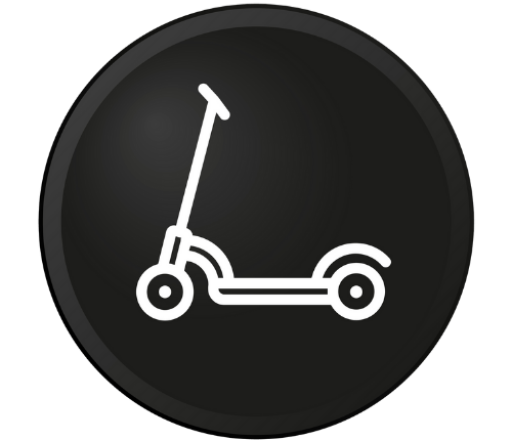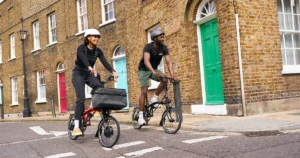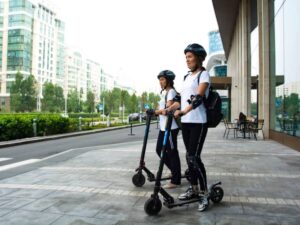Battery-powered scooters, or battery scooties, are becoming increasingly popular as eco-friendly and cost-effective alternatives to traditional petrol scooters.
When choosing a battery scooty, understanding its range and performance capabilities is crucial to ensure it meets your transportation needs.
This article delves into the key aspects of range and performance to help you make an informed decision.
1. Understanding Range
Definition: The range of a battery scooty refers to the maximum distance it can travel on a single full charge. It is influenced by several factors including battery capacity, motor efficiency, and riding conditions.
Battery Capacity: Measured in ampere-hours (Ah) or watt-hours (Wh), battery capacity directly affects the range. Higher capacity batteries typically offer longer ranges, but they also increase the overall weight and cost of the scooty.
Manufacturer Specifications: Always check the manufacturer’s stated range, but be aware that real-world conditions can lead to variations. Factors such as terrain, rider weight, and riding style can significantly impact actual range.
2. Factors Affecting Range
Riding Conditions:
- Terrain: Flat surfaces consume less power than hilly or uneven terrains.
- Speed: Higher speeds drain the battery faster. Riding at moderate speeds can help extend the range.
- Stop-and-Go Traffic: Frequent stops and starts consume more power compared to steady cruising.
Rider Weight: Heavier loads require more power, reducing the overall range. Always consider the combined weight of the rider and any cargo.
Weather Conditions: Extreme temperatures, particularly cold weather, can reduce battery efficiency and thereby the range.
3. Performance Metrics
Top Speed: The maximum speed of a battery scooty varies by model. Urban commuters may be satisfied with speeds of 25-45 km/h, while those traveling longer distances or on faster roads might require higher speeds.
Acceleration: Electric motors provide instant torque, resulting in quick acceleration. This is particularly useful in stop-and-go city traffic. Test rides can help gauge whether the acceleration meets your expectations.
Hill Climbing Ability: The ability to climb inclines is an important performance metric, especially in hilly areas. Check the scooty’s specifications for hill climbing capabilities, typically expressed as a percentage grade.
4. Battery and Motor Specifications
Battery Type:
- Lithium-Ion: Commonly used due to their high energy density and longevity.
- Lead-Acid: Cheaper but heavier and less efficient. Suitable for budget models with lower range requirements.
Motor Power: Measured in watts (W), higher wattage motors offer better performance but may consume more battery power. Common motor power ratings range from 250W to 2000W.
5. Smart Features and Their Impact
Regenerative Braking: Some scooties feature regenerative braking systems that convert kinetic energy back into stored energy, slightly extending the range.
Riding Modes: Many models offer different riding modes such as Eco, Normal, and Sport. Eco mode conserves battery power by limiting speed and acceleration, extending the range.
Connectivity: Advanced models may offer smartphone connectivity, allowing riders to monitor battery usage, range, and other performance metrics in real-time.
6. Maintenance and Longevity
Battery Life: The longevity of a battery is measured in charge cycles. A higher number of charge cycles indicates a longer battery life. Proper charging habits, such as avoiding overcharging and deep discharging, can extend battery lifespan.
Regular Maintenance: Keeping your scooty well-maintained ensures optimal performance and range. Regularly check tire pressure, brake efficiency, and electrical connections.
7. Choosing the Right Model
Urban Commuters: If you primarily ride in the city, a scooty with a range of 50-80 km and moderate top speed should suffice. Features like quick acceleration and compact design are advantageous for navigating traffic.
Long-Distance Riders: For longer commutes, look for models with extended range capabilities (100 km or more) and higher top speeds. Additional features like comfortable seating and storage options are beneficial.
Budget Constraints: If budget is a primary concern, there are models with shorter ranges and basic features that still offer reliable performance for daily commuting.
Conclusion
Selecting a battery scooty involves balancing range, performance, and features to match your specific needs. Understanding the key factors that affect range and performance can help you choose a model that not only fits your lifestyle but also provides reliable and efficient transportation.
Whether you are an urban commuter or a long-distance rider, there is a battery scooty designed to meet your requirements, offering an eco-friendly and cost-effective way to travel.



